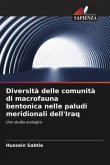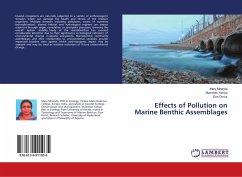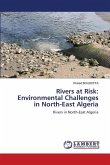The marshland of southern Iraq has been the focal point of intense scientific and governmental attention, ever since the area was subjected to deliberate desiccation during the eighties of the last century. From 2003 onward, when restoration of the marshes started, much research interest was sponsored to coincide with rehabilitation of this unique natural habitat. When re-inundation gradually revived the aquatic life, by mid 2006 water has already re-covered about 41% of the original marshland area. The present study investigated the benthic community of macroinvertebrates in Iraq's southern major marshes Al-Hammar, Al-Chibayish and Al-Haweizah. The aim of the study, which spanned the period July 2006 to June 2007, was to establish thorough description of the evolving benthic macroinvertebrates community. The study also aimed at describing some water characteristics that prevailed after a period of drastic environmental changes. The study followed a strict plan designed to obtainquantitative data sets. Seven locations representing three marshes and a control site have been selected.
Bitte wählen Sie Ihr Anliegen aus.
Rechnungen
Retourenschein anfordern
Bestellstatus
Storno








